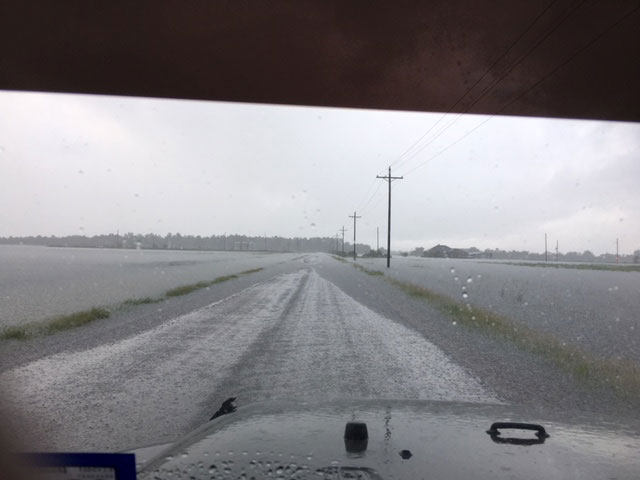 Today in Beaumont, Texas: soybeans on right, rice on left
Today in Beaumont, Texas: soybeans on right, rice on left
Aug 29, 2017
FANNETT, TX – The rain gauge here, about 15 miles east of Winnie and about 15 miles southwest of Beaumont, is almost at three feet. Roads everywhere in our area are flooded and it’s still raining, although Harvey is slowly going east and hammering Louisiana.
The main rice crop here is about 80-90 percent harvested and a lot of ratoon crop is developing. As long as rice is not heading, it can go under water for as long as a week and still survive, however, if rice is heading and goes under water for any length of time, then that rice is history.
The organic crop generally heads later than the main crop so there is likely some organic that is heading right now that will be adversely affected by the flooding. A lot of the organic crop has been harvested, particularly on the west side.
This whole scenario shows the importance of planting early so harvest can occur before the traditional season for weather events like these big storms and hurricanes. As a rule of thumb, we recommend planting early and harvesting before August 15 to ensure a successful ratoon crop.
Conservation tillage and earlier maturing varieties have moved planting dates earlier. One of our Texas A&M rice researchers, Dr. Dante Tabien is breeding for cold tolerance to push planting dates even earlier. Many of the current varieties we work with are semi-dwarves that were first developed in the 1980s to resist lodging caused by tropical storms.
One of our research goals is to help mitigate the effect of erratic weather – when we suggest farmers plant earlier for instance - but it’s a double-edged sword for farmers as catastrophic weather events can wreak havoc with the crop no matter when they occur and that ultimately increases the risk to the operation.